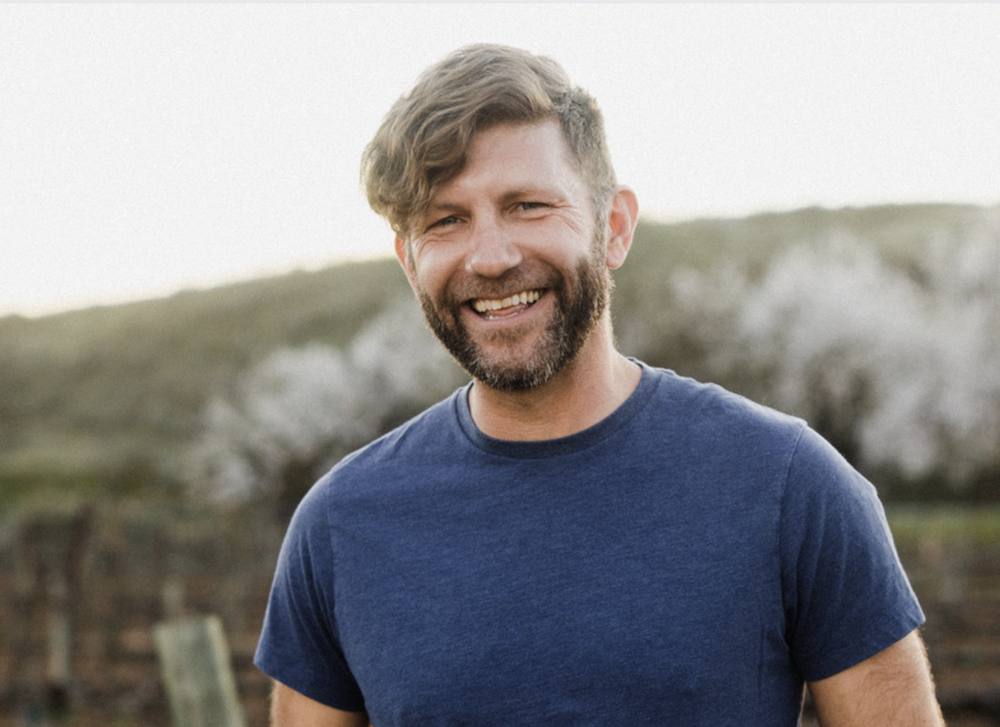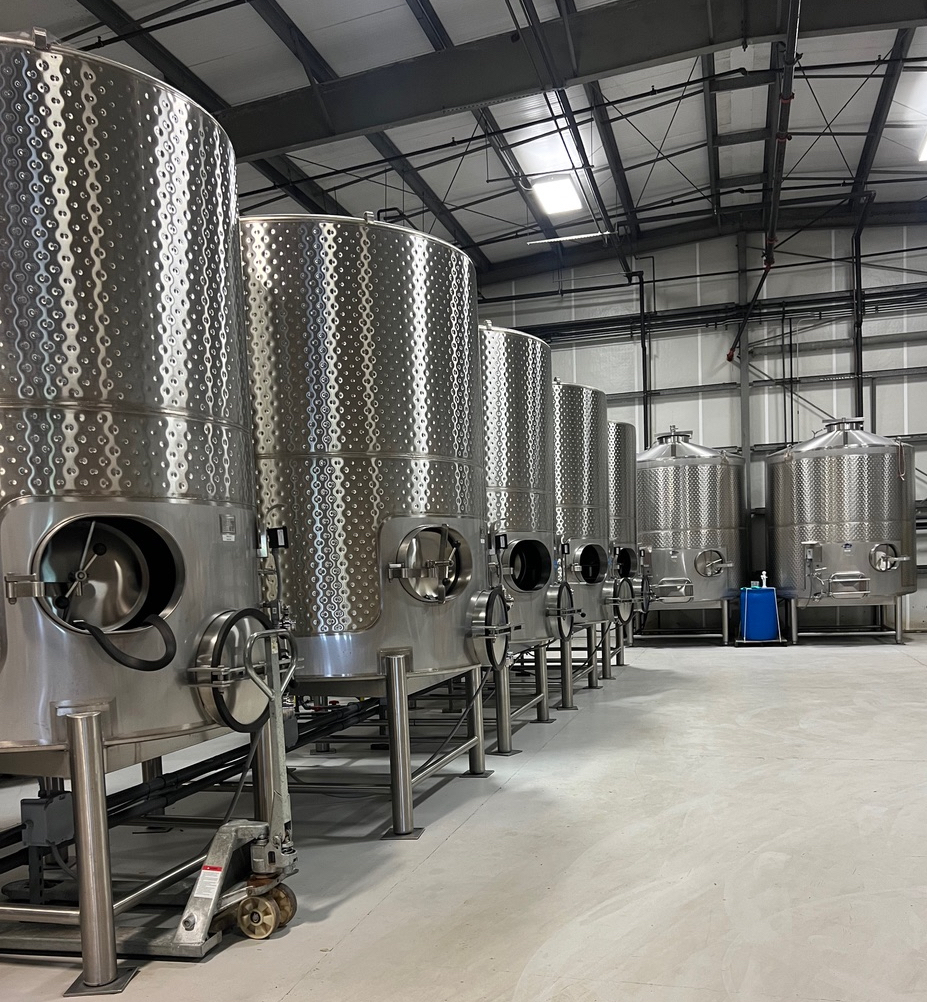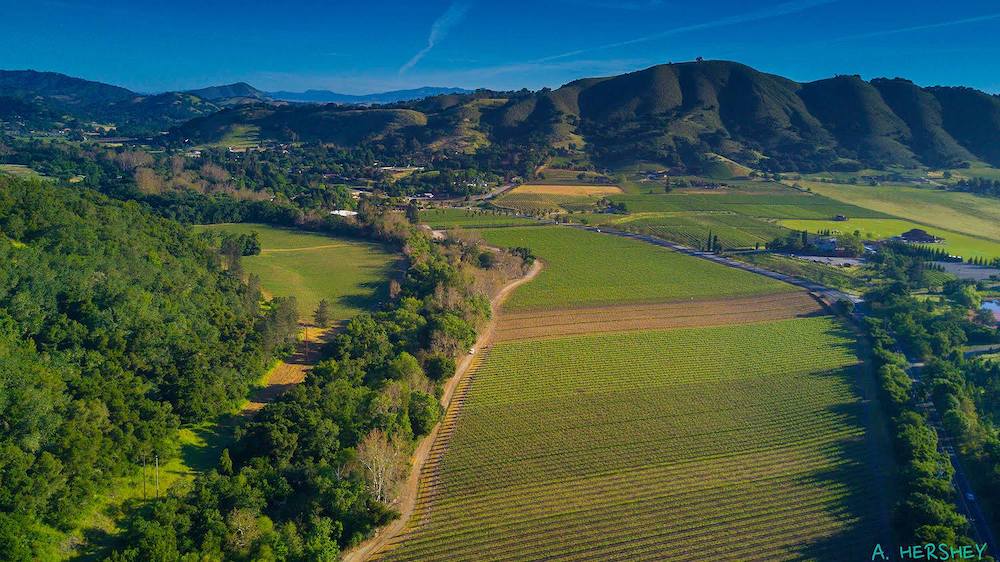
January 19, 2024 – Opportunity makes brothers of us all. The Dorcich family found themselves wanting to scale down their winery facility on Watsonville Road in Gilroy, which has a much larger capacity than they need for their small label’s tasting room. Ian Brand, who owns the I. Brand custom crush facility in Salinas, where he makes wines for many clients, including Birichino and his own La Marea, Le P’tit Paysan and I. Brand lines, was looking for space to expand.
So Brand has leased the Dorcich winery in a major expansion, taking on a press that has more than twice the capacity of his Salinas facility and tanks that can hold 80,000 gallons of wine.
He’s using his new facility to focus on white wines and believes that’s where the future lies.
“I have come to believe that our region of California produces among the best white wines in North America at unparalleled value,” Brand wrote in a rare social media post. “I also recognize that we have become the premier producer of white wines in the region, as white wines are finally on the rise in America after decades of disregard. I have long been hoping to grow our white wine production but lacked the capacity to do so.”
The 2023 vintage, especially for Brand’s white wine program, was bigger than expected, due to the crop being larger than anticipated and instigated the expansion.
“It was one of those years where you had to be careful how many bins you sent to the vineyard because they all would come back full,” he told EMB, noting that bin management is a funny thing.
“In short years, you try to be one of the earlier picks in a block and you send too many bins to try to guilt the grower in getting you a good allocation. In long years you send exactly the number of bins you are contracted for and hope the grower doesn’t overfill them, which they usually do.”
This vintage was a big contrast to 2015, for example, where he had barely enough grapes to produce the amount of wine needed to keep the winery afloat. “Mother nature keeps it interesting. I’m glad we decided to take on the extra space (at Dorcich) last summer. If not, there was no way we would have fit all that fruit through our crush pad in October, not to mention found the tank space for fermentation.”

The arrangement is proving ideal, as the Dorcich facility has a 115hL press. Brand says this is not immense by any means, but it is more than twice as large as his largest press in Salinas. The facility also has stainless steel tanks with a capacity of 80,000 gallons.
Brand explains that a 115hL press can fit almost ten tons whole cluster grapes—without destemming—or close to 15 tons of crushed/destemmed grapes. In comparison, he says, their largest 50hL press in Salinas can fit a little over 4 tons whole cluster.
“Essentially, a 15-ton pick would take over our entire crush pad for a day, as a single press cycle can take more than three hours,” explains Brand. To provide some scale here, Scheid can crush up to 100 tons an hour with their huge presses.
“We have several 30 ton white lots and some additional 10 ton white and rosé lots, which created real scheduling issues in previous vintages,” Brand explains. “Being able to divert those grapes to Gilroy and still operate our Salinas facility was essential in managing our picks in 2023, which was larger than originally estimated, in addition to being a late and a very compressed harvest.”
This is a bit of old home week for Brand, too, as he made wine for the Dorcich family after their split with Goelz in 2017, which took a while to iron out. He produced wine for them in vintages 2018 and 2019 at his Salinas winery until they were able to reclaim their winery facility in Gilroy. Winemaker Terah Bajjalieh, a Santa Clara University grad, made Dorcich wine in 2020, 2021 and 2022, and left in 2023 to concentrate on her own brand.
Says Brand of the facility leasing arrangement, “We’ve been friends with the Dorcich family for a long time and have worked together in various capacities over the years. We’re happy to have found another way to work together now. The Santa Clara Valley, with its rich history and unrealized potential for grape growing and wine tourism, has been of interest to us for a while.”
“We have had two of its best vineyards, the Besson Vineyard and the Bates Ranch Vineyard, as part of our portfolio for years,” he adds. “We’re excited to dig deeper into the terroir and work with the quality growers and winemakers in the region to help it along its way.”

Having the additional space to make more wines will also enable him to make more whites and rosés: wines he likes to drink and wines his customers are demanding.
Brand believes that the future of wine is best viewed through rosy or clear lenses, and not dark-tinted Ray-Bans.
He praises the efforts of the next generation of winemakers in the Santa Cruz Mountains and Monterey region, noting that, “Farm Cottage, Stirm, Madson, Florez and Margins in Santa Cruz are making the best wines of their careers right now, pushing our region to new levels and are on the cusp of arriving if they haven’t already.”
Brand mentions Sam Smith as a special talent on a rapid upward trajectory. “His most recent releases show a deft touch with fine wine unparalleled in Monterey since Joe Davis (who worked for Dan Lee at Morgan, and subsequently at Bernardus, before establishing Arcadian in Lompoc), moved south. It’s illuminating seeing the landscape through their eyes and I do my best to help them along their way. Their work is proving important in building our region.”
Brand goes on to laud the last few vintages of Caraccioli sparkling wine, calling them absolutely revelatory. “I can’t say enough about the precision and quality of Scott’s endeavors in the winery and vineyard. And Cody Rasmussen’s Desire Lines Riesling from Massa Vineyard is a must find for fans of the vineyard and region.”
Incidentally, Brand had been making wines for the Massa’s from the Massa Vineyard in Carmel Valley, but with the divorce, the Massa family has decided that they want to focus on other interests. Brand says they are currently looking for the next owner of this historic property.
“It’s an absolute gem that produces Cabernet Sauvignon on par with the best properties in California,” says Brand. “That’s not hyperbole. The Chenin Blanc block is also special. It will take the right person but I believe that can be an iconic property that helps define Monterey wine over the next several decades.”
Currently, whites make up 60 percent of his production and he’d like to expand that to 65 percent. This will likely occur through growth in his Paysan label Sauvignon Blanc and Chardonnay, which he says are both proving to be extremely popular in their current iterations. He is also making Albariño, Arinto, Chenin Blanc, Melon de Bourgogne, Pinot Gris, Sauvignon Gris, Verdelho and Viognier. Additionally, he’s making rosés from Cinsault, Grenache and Mourvédre.
It’s all part of his general philosophy of making moderate alcohol wines, which he’s been doing for the better part of a decade. “We’ve focused on making wines that are complex and densely flavored without being big or heavy,” notes Brand. “Over that time, it’s become more and more common for people to comment on the alcohol levels and the weight of our wines. I think wine drinkers have become more conscious of alcohol levels, residual sugar and histamines in wine and that changing palate is reflective of a cleaner, more vegetable focused diet.”
Brand is also in the process of working out the details to install a new vineyard. “We’re in discussions to put in some Assyrtiko, Fiano and more Albariño in a pretty premier location. Over the years, I’ve come to realized that the alluvial plains, foothills and benches of the Salinas Valley are exceptional at producing bright, aromatic, salty and minerally wines with delicate tannin profiles, which makes it especially good for a number of white varieties. As American consumers have become covetous of quality, food friendly white wines, I think we have a moment when we can define ourselves as a premier wine region, if we focus on what makes us special.”
We’ll keep a clear eye on that exciting endeavor: wearing our rose-colored glasses, of course.
About the author
Laura Ness is a longtime wine journalist, columnist and judge who contributes regularly to Edible Monterey Bay, Spirited, WineOh.Tv, Los Gatos Magazine and Wine Industry Network, and a variety of consumer publications. Her passion is telling stories about the intriguing characters who inhabit the fascinating world of wine and food.
- Laura Nesshttps://www.ediblemontereybay.com/author/lness/
- Laura Nesshttps://www.ediblemontereybay.com/author/lness/
- Laura Nesshttps://www.ediblemontereybay.com/author/lness/
- Laura Nesshttps://www.ediblemontereybay.com/author/lness/


